What to Buy
| [ LiB ] |
What to Buy
The most common rock guitars are the Gibson Les Paul and the Fender Stratocaster. There are many, many other guitars out there, but you can't go wrong with one of these.
My favorite bass guitar is the Fender Precision bass. You can't go wrong with those either. Though the Fender Jazz bass is pretty sweet too. Currently I use an Epiphone. It's white. I don't know the model. It was cheap ($250 used), sounds good, and plays and stays in tune.
Figure 3.5. Gibson Les Paul.

Figure 3.6. Fender Stratocaster.

Figure 3.7. Fender Telecaster.

Figure 3.8. My Epiphone bass.

Figure 3.9. My Epiphone bass close up.

Figure 3.10. Another close-up of my Epiphone bass.

Figure 3.11. Three bass guitars (Fender Jazz bass, a 5-string bass, and a Fender Precession bass).

Shy away from the marketing hype, ask other, more experienced musicians their opinions , but basically just trust your instincts . The guitar you like will find you.
I remember in early 1984 when my band, The Day I Lost My Virginity, was playing a basement party to about six people in Arlington, Virginia. One of them was Ian MacKaye. He had just quit Minor Threat and was learning guitar to start a new band . After our set, he asked if he could play my Gibson SG for a minute. He picked it up, strummed a chord on it and said, "I'm looking for a guitar; I like this one. What kind is it?" I told him.
He still uses a Gibson SG today.
Pawn Shops
You can use the "figure out how much you want to pay, and when they aren't looking, put only that amount in one pocket" technique in pawn shops even better than in big chain guitar stores. The rule is that you can get anything in a pawn shop for between 1/3 and 2/3 of the price on the ticket. Just lay that amount on the counter, say "This is all I have," and if they say no, pick your money up and walk out. They will follow you out and make a deal.
Guitar Cases
Get a good hard shell case for your guitar. It will protect it against bumps. Those soft cloth shoulder cases are lighter, but they give only the illusion of safety. They offer no protection.
Figure 3.12. Hard shell acoustic guitar case closed.

Figure 3.13. Hard shell acoustic guitar case open .

Figure 3.14. Soft shell electric guitar case.

Security
Once you have your instrument, make sure you don't lose it. Write down the make and the model and serial numbers and keep them in a safe place. (On guitars, the number is usually on the back of the headstock or inside the truss rod neck adjustment space, under the plastic cover. You may have to remove the screws to find it.)
Take at least two good photos of each instrument and piece of equipment, one of the whole thing, and one closer up, especially of any identifying unique flaws or alterations.
See if your homeowner or renters insurance covers instruments, and if so, add them to your policy. If not, consider purchasing separate insurance for your instrument. Keep the receipts somewhere safe. Not in the case with the guitar! A safe deposit box in a bank is your best bet.
Regardless, don't hand it over to thieves by being careless. Never leave an instrument in plain view in your car. Any junkie worth his fix will bust any window for any guitar. Put the guitar in the trunk (but not on a hot day; the heat can warp the neck) or better yet, bring it with you. If you're walking in a seedy neighborhood, bring a friend. And always walk with it between you and your friend, not on the outside, where it's easier to snatch and run.
Also, and especially if the latches on your case do not close securely, make sure that you walk with the latches facing in so if it opens, it falls against your leg, not on the ground.
When playing gigs, always have one person stay at each point while moving the gear; i.e. one person stays with the car, one on the other end. A guitar or any equipment in public is an open invitation to theft. After sound check, it's a good idea for one person to stay with the band gear while the rest of you go to dinner. This can be a band member, a roadie , or someone you trust who just wants to hang out with a band. Rotate band members so no one person gets stuck with this every time. And make sure you bring food back for them!
I sometimes go one step further: I intentionally make my possessions look like they're worth less than they are. My car is painted flat black with primer only. Same for my mountain bike. I've taken knives and spray paint to guitars.
If something already looks stolen, it's actually less likely to get stolen.
This is a big step and will reduce the resale value, but will make them less likely to get nicked. And will make you less likely to pawn them in times of difficulty, as you won't get as much for them.
Figure 3.15. My ghetto-fabulous mountain bike.

Tuners
Guitar tuners are inexpensive and easy to use. You just plug your guitar or bass into the input, turn it on, and turn the tuning heads (a.k.a. tuning pegs, a.k.a. tuning keys, a.k.a, machine heads) until the note is correct. The strings on a guitar are, in order from the fattest string to the skinniest, E, A, D, G, B, E. On a bass, they are E, A, D, G, an octave lower than a guitar. (See the tutorial on the CD-ROM for more on tuning.)
Figure 3.16. Digital guitar tuner.
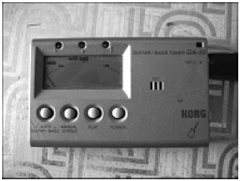
Figure 3.17. Digital floor-model guitar tuner.

Figure 3.18. Tuning pegs on the head stock of my bass.
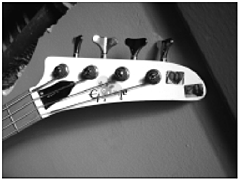
Keep in mind that some basses now have five strings. There is an extra low string tuned a fourth (four whole tones; eight semitones) lower than the low E. It's low B. A lot of "nu-metal" bands use them: Korn, Limp Bizkit, Sev, and others. I don't love that stuff. It's like my friend says, "Skateboarding ruined music," but what do I know? I'm old. All I know is they all have four guys with shaved heads and one guy with Dreadlocks, a DJ, and usually two singers.
I've heard that "the goatee is the mullet of the millennium ."
Strings
Guitars and basses need to have their strings changed regularly. At least once a month for guitars, and at least every two months for basses. Touring bands with money and guitar techs (roadies who only look after the guitars) usually get their strings changed every day.
Guitar strings cost about 5 to 10 bucks a set. Bass strings are thicker and break less but cost 20 to 40 bucks a set. I remember the bass player in New Order once said in an interview, "To me, success is being able to buy two packs of bass strings at once."
Figure 3.19. Bass strings.
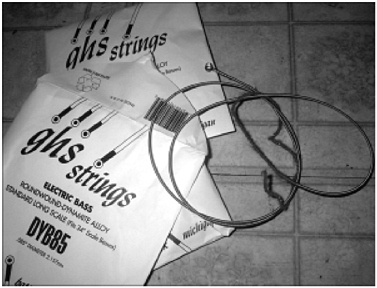
Strings sound bright and powerful for only a few days, and the sound fades in brightness with playing, due to stretching and finger oils.
Most people at least try to get the money up to change their strings before going into the recording studio. One trick is that you can take the strings off your bass (or guitar, if you're that poor. I have been before) and boil them in a gallon of water (with an optional ounce of vinegar), dry them, and put them back on. They will sound new for exactly one day and then die and sound flatter than ever.
You can also take broken strings and tie them in a knot and use them againthe knot has to be above the nut.
Don't throw used guitar strings on the floor. I have heard of them accidentally getting caught in plugs in the wall, starting fires, and burning down a studio.
Strings are available in different gauges , or thicknesses. The thicker they are, the better and heavier the tone, but also the harder they are to play. I go for a medium-gauge guitar string, an .011 set (sets are gauged by the diameter in fractions of an inch of the small E string). A .009 set is light, a .013 set is heavy. Sometimes just listed as 9 and 13 or 09 and 13.
Figure 3.20. Individual guitar strings out of pack. Note gauge listed on each paper pouch.

Figure 3.21. Single guitar string in the pack.
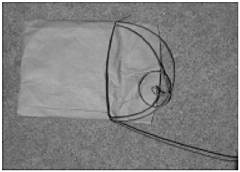
Changing Guitar Strings
Basically, you should change one at a time. Don't take them all off and then put all the new ones back on. This is bad for the truss rod inside the neck and can even harm a guitar, especially an acoustic guitar.
Take off one string and find the corresponding string in the pack of new strings. There is usually some kind of legend on the pack to tell you which is which. String the new one through the hole in the bridge. It's a little different on each model. On most acoustic guitars, you'll be gently pulling pegs out. On most electrics, you'll be pulling them through a metal bridge. If the guitar has a whammy bar, you'll probably be pulling them through the back of the body of the instrument.
If you're especially poor, save the old strings as spares . They'll sound dead compared to the new ones, but if you break a string, especially during a gig, you'll appreciate ita dead string is better than no string. And at least dead strings won't need to be stretched to stay in tune. Wind the old string up and put it in the correct envelope that the corresponding new string came in so you'll know which string is which. Then when you're done, put the packs in the plastic pack that housed the entire new sting collection.
Pull the new string through the bridge, across the nut, and to the tuning head. Wrap it a few times around the tuning head before putting it through the hole. Then put it through the hole above the wrapped strings; this will keep the string from slipping out.
Next, pull the end of the string with one hand and turn the tuning peg with the other. Get it near to where it should be by touching the string being tuned on the fifth fret and turning it until it matches the next one or by using a tuner. Go down to the fourth fret for the G and B strings, and back to the fifth fret for the B and E. (See the tuning segment on the CD-ROM). Then pull a bit on the string at various places on the neck to stretch it a bit and tune it again.
Repeat five more times (three more for bass).
Figure 3.22. String winder is helpful with restringing a guitar quickly.

NOTE
On guitar, I often buy an extra high E and B string when I buy a new set and keep them in my case. Those are the strings that break most often on most guitars, though on some guitars and with some playing styles, sometimes the G will break most. You'll figure it out with time and be able to prepare accordingly .
Amps
Amplifiers (amps) are the things that power your sound to drive your speakers . The term amp (not be confused with amperage, an electrical measurement, which you needn't really concern yourself with here) is often generic for not only the amplifier, but the amplifier and the speaker together. Often, they are in the same housing. This is called a combo amp. Combo amps are fine for small gigs, but for larger, louder, more professional situations, most people use a separate amp (called the head) and speaker. This is called a stack or sometimes a piggy back amp, because the amplifier sits atop the speaker cabinet.
Most speakers have wheels, sometimes removable. Wheels are important because amps are heavy, and you'll be carrying them a lot. If you don't have wheels, you can use a skateboard as a dolly . This seems like a no-brainer, but must not be, because I can't count the times I've seen some skate punk band put down their skateboards and huff and puff lifting and carrying their amps into a venue .
Guitar Amps
The most commonly used rock guitar amp is the Marshall Half-Stack, also just called a Marshall. It sounds great for loud, dirty, distorted playing, and is pretty much the guitar sound on most rock records. There are a million other guitar amps, but you can't go wrong with this one.
Examples: Fugazi's Ian MacKaye, Burning Airlines' Jay Robbins. Zebrahead and Jets To Brazil use them too.
A Marshall, however, does not have a good clean guitar sound. Some guitarists even have two amps on stage with a foot switch to go from one to the other. Dave Navarro uses one to go from a Marshall for crunch to a Roland Jazz Chorus amp for his clean sound. It's a cool contrast. The Roland is also used by Violet Indiana on "Busted," and LoveSpirals on "Our Nights."
Figure 3.23. Marshall Half-Stack.
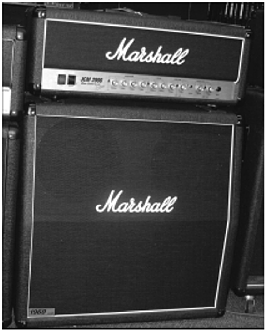
Figure 3.24. Roland Jazz Chorus.
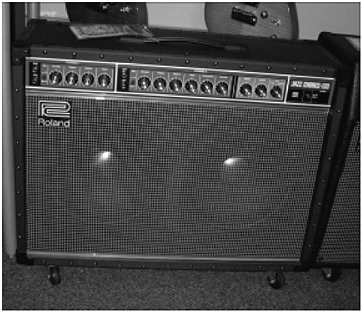
You can get an A-B foot switch cheap at any music store. Just tell them what you're going to do with it and go for the simplest one they have. It doesn't have to do much and needn't have active electronics. It is just binaryA B A B. It should be a passive box for a passive job. The switching box goes from the guitar (or effects) into a Y pattern into the two amps.
Some combo amps have two preamps built into the unit and come with a switch to go from one to the other. The switch jack plugs into the back, usually into a female jack marked Switch.
You can also get cool small amps, like the portable Pignose shown in Figure 3.25. This is the favored amp of street performers.
Figure 3.25. Pignose Amp sitting on a bar stool.
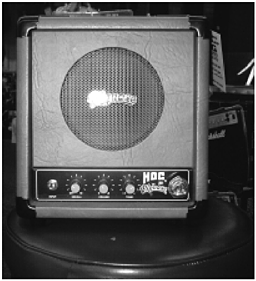
Don't ever plug a speaker output from an amplifier into another amplifier input. It will blow one or both amps. If you want to use one input with two or more amps, daisy chain them by plugging the guitar into one amp, and use the other input on the amp (many amps have two) to plug into the input of the next amp. The two inputs on most guitar amps are passively wired together without any circuitry between them to boost the signal.
You could also use a Y-cord to split the signal to send to two amplifiers.
Some effects (notably a stereo chorus) have one input and two outputs. They actually synthesize a stereo sound and are best sent to two amps on opposite sides of the stage. This will create a really cool swirling sound.
Bass Amps
The most used rock bass guitar amp is the Ampeg SVT. It sounds great for loud, solid, heavy, crunchy bass and is pretty much the guitar sound on most rock records. There are a million other bass amps, but you can't go wrong with this one.
They do weigh a ton, though (about 150 pounds actually, about 75 each for head and cabinet). I used an SVT on over 500 gigs in 6 countries and 35 states with Bomb, and my joke was that the SVT stood for Severe Vertebral Trauma.
Only get one if you have a roadie. And keep in mind, you'll probably spend at least 200 bucks a year replacing tubes, and at least that much re-coning the speakers that blow often. An SVT cabinet usually is an 8-10, which means eight ten-inch speakers, which allegedly is the equivalent of one 80-inch speaker. It sure sounds like it. There's nothing sounds like an old SVT in good condition. They ROCK.
With guitar and bass amps, the old ones are often cooler than the new ones. They are sought after as " vintage ." But like a cool old car, they will often need more maintenance.
Figure 3.26. My Carvin combo bass amp.
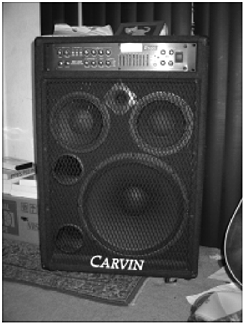
My bass amp is a Carvin Cyclops RL6815 model (combo with a Carvin amp head R600). It's small and loud. Not as loud as an SVT, but way more portable.
The Carvin Cyclops is a transistor amp with a tube pre-amp built in. This is kind of the best of both worldsthe stability and relative lightness of a solid state (mostly transistor as opposed to all tubes) amp with the crunch of a tube amp, and with only one, not many, tubes to replace and burn out.
Figure 3.27. Front of bass amp.

Figure 3.28. Close-up of front of bass amp.
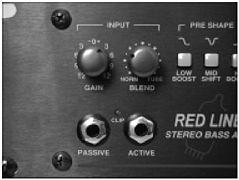
Figure 3.29. Another close-up of front of bass amp.
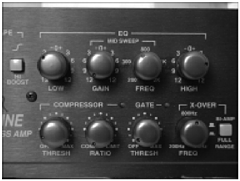
Figure 3.30. Yet another close-up of front of bass amp.
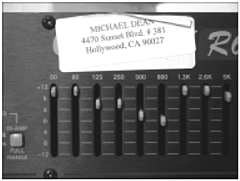
Figure 3.31. One more close-up of front of bass amp.
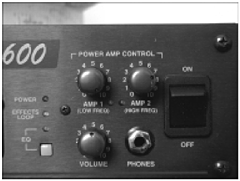
Figure 3.32. Back of bass amp head.

Figure 3.33. Back of bass amp head detail.

Figure 3.34. Another close-up of back of bass amp head.
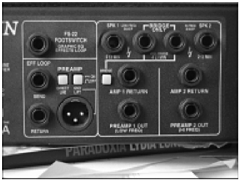
Figure 3.35. One more close-up of back of bass amp head.

Another small bass amp I like is the SWR Bassic Black combo. My guitarist Mike Stan says, "The killer setup is to add a 2-10 (two ten-inch speakers) cab, which adds 40 watts and makes the amp sound amazing."
Make sure you read the owner's manual on any new equipment to know the ins and outs of its intricacies. Not everything is as intuitive as you'd think.
And don't throw the manual away. My dad always said, "If at first you don't succeed, take the directions out of the trash."
Sometimes if you don't have the manual, you can find it as a download or for sale in paper form on the Internet. Just search Google for the brand name , the model number, and the word "manual."
Power
Because the human ear is less sensitive to bass frequencies, your bass amp has to have more power than your guitar amp. A 300-watt bass amp is a good match to play with a guitarist using a 100-watt guitar amp. Both of these are loud as hell, by the way, and might be too much volume for a small club. You can always turn them down though.
Most amps have two volume controls: a regular volume and a master volume. The regular volume, usually on the left, controls the amount of distortion, and the master volume (usually on the right) doesn't add much distortion, only volume. Fiddle with the balance between the two and learn by experimentation what different settings sound like at the same volume. A good musician not only knows her guitar, but her amp too. She can get any sound she likes any time without a bunch of trying, because it's familiar territory. She's been there before.
If you can find one (they don't seem to make them anymore), the Tom Scholz Power Soak is a pretty cool tool. Invented by the guitarist from Boston, these are basically passive switchable arrays of power resisters that go between the amp head and the speaker. You can turn the amp up to 11 and then dial down the volume while keeping the awesome tone. Check pawn shops. Tom also made the Rockman, a portable battery- powered practice amp that clips on your belt. It can also be used to go directly into the board for recording without an amp, though you won't be able to get feedback, and the tone is distinctly 80s precious metal.
Speaker Impedance
Speakers all have an impedance rating, which is measured in ohms (sometimes shown by the Greek omega symbol: W ). You don't need to know much about this except that the impedance of the amp and the impedance of the speaker should match. Some swear you can use a higher impedance speaker (like 8 ohms) with a lower impedance amp (like 4 ohms), but never the other way around, which might blow the speaker. Others swear anything but the same impedance is problematic and can damage both amp and speaker. Better safe than sorry.
Some amps have different jacks for different ohmage output or a switch to change it. If you buy a combo amp, they should already be matched.
Figure 3.36. Speaker output on mixer. Note ohm minimum notice.
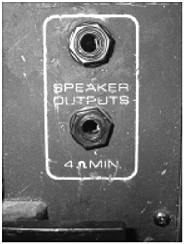
Speakers also have a wattage rating (called watts or w). You can use a higher wattage speaker with a lower wattage amp, but never the other way around, which will blow the speaker.
Amp Cases
Get cases for your amps. Anvil makes the best cases. They are also referred to as Anvil road cases. They are solid wood covered with plastic, with metal corner reinforcements and foam inside to keep your amp safe. They have funny little latches which take some getting use to, but are very secure. These cases can protect an amp from being damaged when it falls off an eight-foot stage, which is probably going to happen eventually. Some amps can be used while in the case, with just the front and back panel removed. This will protect them during use, not just during transport.
Anvil road cases are great, especially if you ever ship your gear on a plane. Make sure you stencil your band name on the amps and cases too. This makes them easier to keep track of at the gig and the airport. Though I don't think Bomb would have gotten through today's security shipping our gear.
Guitar amps are actually quite fragile because they often contain tubes. There are entirely solid-state amps (transistor only), but they don't sound as good. You need older technology, tubes, to make a loud guitar sound good.
Figure 3.37. Anvil case.
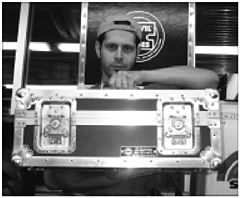
Figure 3.38. Anvil case again.
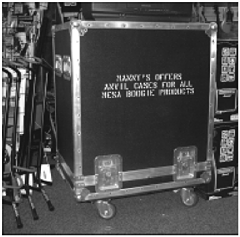
NOTE
When you ship your guitar on a plane in the cargo hatch, loosen the strings a bit. The changes in pressure at high altitudes can damage your guitar, especially an acoustic.
Some guitarists actually buy a ticket for their guitar and strap it in to the seat next to them.
Cables
You need cables to connect amps, microphones, instruments, mixers, and speakers.
There are several different types of cable, and they are not interchangeable. They should be used for their own purpose specifically .
Guitar cables are made of insulated coaxial cable. This is basically a braided outer cable inside the rubber covering. The braided part has another rubber insulating layer inside, and in the middle is the other wire. The braiding protects the signal from radio interference and hum.
Some are curly and some are straight. I find that the curly ones actually get tangled more, though they do look cooler.
Both ends of a guitar cable terminated by 1/4-inch male plugs, which go into 1/4-inch female jacks on the guitar (or bass) and amp. (If I have to explain why they are called male and female, you probably aren't old enough to lift a guitar and might want to wait a few months before trying all this.)
Figure 3.39. Guitar cable.
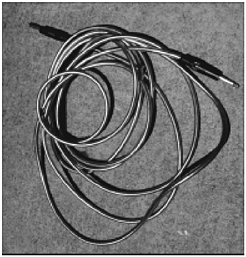
Guitar cables come in lengths like 6 feet, 10 feet, 15 feet, and 20 feet.
Cost: $10 to $50. You probably want at least a 10-foot cable. Keep in mind that longer cables have a little more signal loss and more hum.
Figure 3.40. Six-inch effects cable.
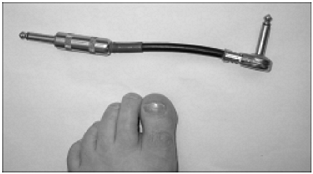
There are also short cables for connecting one floor or rack mount effects peddle to the next one. They are usually six inches long. Cost: $5 to $10.
Speaker cables look much like guitar cables (1/4-inch male jack on each end) but are not shielded . Sometimes they are flat with both wires next to each other. Using a guitar cable as a speaker cable can damage the speaker or P.A. amp. Using a speaker cable as a guitar cable will add a lot of unwanted 60-cycle hum to your sound. Cost: $10 to $50.
Figure 3.41. Speaker cable.

Microphone cables are a little thicker than guitar cables and have XLR plugs on one or both ends. Most P.A. systems have an input for XLR and for 1/4-inch jacks on each channel. Cost $15 to $40.
Figure 3.42. Microphone cable.
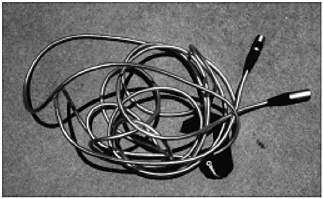
Figure 3.44. Female end of XLR micro- phone cable.
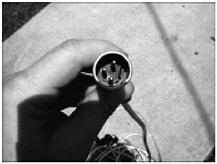
Figure 3.43. Male end of XLR micro- phone cable.
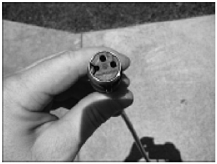
If you try your microphone and it should be working but isn't or sounds bad or quiet, you may need an impedance-matching line transformer. It plugs between the end of the microphone cable and the female input.
XLR cables all have a little quick release push button switch on the side that you have to push before disengaging them.
Figure 3.45. Line transformer.

Figure 3.46. Quick release push button switch on side of XLR plug.

Cables all look quite alike and tend to get left behind at gigs or picked up by accident (hopefully) by another band. I print stickers with my name, band name, and phone number (or name and e-mail address) and stick them on my cables and basically on every piece of equipment I own. That won't stop a thief , but it will keep someone from accidentally taking it and make it easier to return if they do, or if you leave it.
Cables eventually stop working. They fray internally and the connection becomes intermittent. This also happens to the inside of the jack on the guitar, and to a lesser degree, on the amp. If you're rich, you can just replace the gear or pay someone to fix it. If you're not rich, you (or a roadie) can open them up and solder them yourself. See the "How to Solder" section in Chapter 5, "Microphones, P.A. Systems, and Troubleshooting."
Guitar Stands
Guitar stands are a lot better and safer for your instrument than just leaning them up against an amp. They are cheap and fold up easily. But make sure you put stickers with your name on them on all three parts because they tend to get lost a lot.
If there's a nightclub where you know people, you can usually get them (and other stuff) free. They usually have a closet full of cheap music parts, tuners, microphones, and so forth that bands drunk on booze and power forgot to pack up at the end of the night, especially when they were trying to get some ugly girl or boy to come home with them. Ask the soundman at the club.
Figure 3.47. Guitar stand.
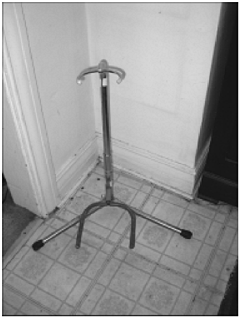
Figure 3.48. Acoustic guitar on guitar stand.
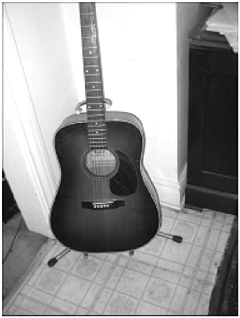
Guitar Straps
You need a strap if you're going to play a guitar or bass standing up. They are all pretty similar, and you can go as basic or as complex as you like. I avoid ones made of chain; no matter how cool they look, they will start to hurt your shoulder, especially with a heavy guitar like a Les Paul. I use a basic cloth model, wide and made of a similar material to a car's seatbelt.
They attach at the top and bottom of the body of the guitar by putting the holes in them over the little strap buttons on the guitar.
There are also locking systems, but I don't use them.
Most guitarists string their cable through the bottom of the strap to keep the cable from accidentally getting pulled out of the guitar during a gig.
| [ LiB ] |
EAN: 2147483647
Pages: 138